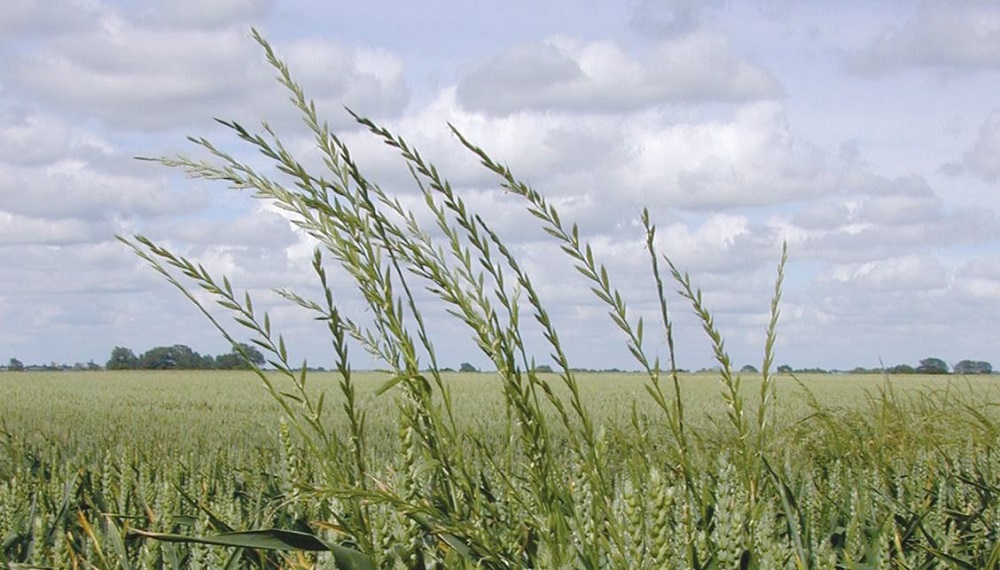The growing challenge of herbicide resistant Italian rye-grass
Thursday, 18 August 2022
Italian rye-grass is one of the main weed species in cereal crops. With infestations steadily spreading across UK farms, AHDB Crop Protection Scientist Kristina Grenz explains how herbicide resistance management should be front of mind this autumn.
Italian rye-grass v black-grass
The first cases of herbicide resistant Italian rye-grass (Lolium multiflorum) were found in 1990. Fast forward a few decades and resistant populations have spread1 across several hundred farms and dozens of UK counties – with resistance hotspots in Essex, Kent, and Yorkshire.2
Although not as widespread as black-grass (Alopercus myosuroides), Italian rye-grass has a higher propensity to develop herbicide resistance traits. It also boasts greater seed production and better spring germination – reducing the power of some non-chemical control options used to contain black-grass.
Herbicide resistance status
Italian rye-grass is likely to become more problematic, especially if the resistance threat is not taken seriously.
The majority of resistance in Italian rye-grass is due to non-target site resistance (NTSR) – with this mechanism enhancing the weed’s ability to metabolise (detoxify) crop protection agents.
Target site resistance (TSR) is also present.
ACCase (HRAC group 1) resistance, which blocks the site of action specific to ‘fop’, ‘dim’ and ‘den’ herbicides in grass weeds, has been detected – with some populations no longer susceptible to cycloxydim and pinoxaden.
Resistance to ALS-inhibiting herbicides (HRAC group 2) was also confirmed in 2012.
In some extreme cases, complete resistance to flufenacet (HRAC group 15) has been found. A useful mode of action option in residual herbicide stacks, it is a worrying development.
However, better news is a new herbicide mode of action for winter wheat. Cinmethylin (HRAC group 30) – marketed as Luxinum Plus, BASF – has potential to add strength to grass-weed herbicide programmes and may provide useful activity against Italian rye-grass (when applied at the label rate for this target).
Thankfully, Italian rye-grass remains susceptible to glyphosate. However, it is a key species at risk of developing resistance to this herbicide and it is essential to follow the guidelines developed by the Weed Resistance Action Group (WRAG). These cover the use of glyphosate during the pre-drilling and pre-harvest periods.
Integrated weed management
With the sparsity of herbicide options coming to market, it is vital to protect all available chemistry via non-chemical approaches and best application practices.
Development of herbicide resistance is within your control. Once resistance has developed it is challenging to eradicate. Swift application of effective integrated weed management strategies is vital.
The importance of good farm hygiene cannot be overstated. Thoroughly cleaned equipment is one of the most effective means of limiting the spread of Italian rye grass seeds – across fields and farms.
To reduce weed burdens, cultural control options need to be layered.
Understanding weed biology will help you decide on the most appropriate approaches for the weed profiles on your farm.
A varied crop rotation, using break crops or long-term leys, is proven to reduce Italian rye-grass populations.3
Ploughing is especially effective, as the seeds cannot germinate at depth3.
Delayed autumn drilling (until late October, where possible), which exploits the lack of seed dormancy, is also a strong option.
Integrating herbicides
Naturally, avoiding the use of herbicides is the best resistance management strategy – although impractical, in many situations.
As a result, good resistance management involves rotating herbicides with different modes of action (across seasons).
A variety of active ingredients and well-timed herbicide applications at the recommended rates have proven effective at reducing Italian rye-grass populations.
Effective herbicide control in the autumn is central to success, which also helps to reduce secondary peak emergence in the spring.4
A herbicide programme that combines pre-emergence and post-emergence herbicides should be considered in a management plan, as well as applying glyphosate to fallows, break crops and as a pre-harvest treatment.
It is essential to monitor for early signs of poor control following herbicide applications.
Resistance tests are a valuable tool to ascertain if resistance is present or whether issues may derive from poor herbicide applications practices.
If resistance is suspected, samples can be sent to organisations that offer herbicide resistance testing (for a fee), for example NIAB and ADAS.
Most resistance tests are conducted in pot or petri-dish trials from good quality seeds collected in the field5.
Different forms of resistance occur across the country. These need to be considered when designing herbicide programmes.
By knowing a field’s weed population and herbicide resistance statuses, it is possible to tailor management for sustainable long-term control.
Data from UK resistance tests also provides invaluable information about the spread of Italian rye-grass resistance across the country.
Visit our Italian rye-grass page
Access our weed management guidance for arable rotations
References
 AHDB
AHDB


